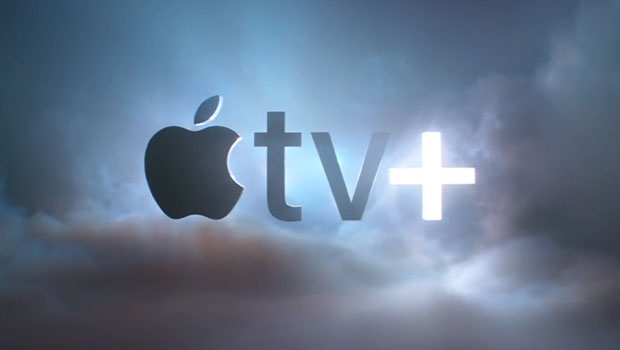Apple announced several new services earlier this week. Apple TV+, the star of the lineup, will launch this fall with some high-profile original content — something that has become key to the success of any over-the-top streaming service.
Apple also announced Apple TV Channels, an aggregation service that will pull together content offerings from cable and satellite channels, as well as other OTT services, such as Hulu.
With this announcement, it could be argued that Apple is hedging its bets. It’s trying to be both a streaming service — or “Netflix killer,” as some media reports have branded Apple’s OTT play — and an ecosystem player along the lines of Roku.
What is notable is that instead of Apple TV Channels existing solely on an Apple product, the service will be available through devices from Roku and Amazon and even on smart TVs from companies that could be considered Apple’s biggest competitors, including Samsung and Sony.
“Apple is evolving into a services company,” said Joel Espelien, president of the Corum Group.
“They will increasingly offer services that run outside of Apple devices — but always work best on Apple devices,” he told the E-Commerce Times.
“The TV announcement was a baby step, but still a step toward offering real bundles to consumers,” added Espelien. “They clearly want to offer full subscription services — as with music also. They just don’t have a mix that works yet for TV, so they are going with a safer ‘channels’ marketplace type approach to start.”
Big Presentation but Small Payoff
To make its announcement, Apple pulled out all the stops, featuring an onstage appearance by media icon Oprah Winfrey. In some ways, the event arguably overshadowed the announcement.
“If it were any other company except Apple making the announcement, there would have been a huge yawn from the market,” remarked Steve Blum, principal analyst at Tellus Venture Associates.
Perhaps Apple tried to pull out the stops to draw attention away from what it didn’t announce.
“It was a mixed bag because we don’t know how deep its content catalog will be. We don’t know pricing, and we don’t even have a firm date on when it is launching,” said Greg Ireland, research director for consumer digital transformation and multiscreen video at IDC.
“What we saw was that it was billed as a competitor to Netflix and Hulu, and we have some information that big stars are creating content,” he told the E-Commerce Times.
“But we already knew they were spending a lot of money, so now we have to wait and see and assess how impactful this will be,” added Ireland.
“The Apple TV service, at least what we know of it, isn’t significantly different from any other OTT service,” Tellus’ Blum told the E-Commerce Times.
“They’re putting the pieces together a little differently — they’re borrowing business model bits from several different platforms, but overall it’s still the same business model,” he added.
However, what could make it different are Apple’s branding and its ability to leverage its existing customer relationships and hardware/software ecosystem.
“It’s a fair question whether that’s going to be enough to make it stand out in the TV business, but it’s a unique advantage, and Apple is smart to use it like this,” said Blum.
OTT Market – Competitive but Not Crowded
It would seem that Apple’s entry into the OTT space might come at the expense of another service, but this likely isn’t the case. Even atUS$10 to $15 per service per month, consumers seem to be willing to subscribe to more than one.
“Our survey data shows that consumers subscribe to two services, and this is the growing market as it inches up, so there is room for multiple services,” noted IDC’s Ireland.
Apple can grow in the OTT space, but that doesn’t have to be at the expense of Amazon Prime Video, Hulu, or Netflix.
“There are opportunities for a good handful of OTT services to have success, so Apple TV+ doesn’t need to be a Netflix killer to be successful,” added Ireland, “but a lot will depend on how they want to define success.”
Apple appears to be breaking the traditional OTT mold while rewriting the playbook to mix metaphors.
Apple will “have exclusive programming, as the big OTT players do, and that will help it position its video brand as it has for HBO and Netflix — but it’s just icing on the same cake as everyone else’s,” suggested Blum.
“This is a lot like the early days of digital satellite TV in the mid-90s,” he added.
“There was some programming that was unique to particular platforms –DirecTV’s NFL package, for example — but for the most part, programming lineups were identical,” noted Blum. “What distinguished them was bundling. Dish, for example, focused on low-cost packages and distribution. DirecTV and U.S. Satellite Broadcasting launched via RCA’s then-formidable consumer electronics retail channel.”
Competition for Content
To be successful in the OTT space will require a certain amount of content.
Today, there is simply more programming than ever before, thanks to original programming on broadcast TV, basic cable, premium cable, and now OTT services. It has fractured the audience, but the major players are willing to make a big splash to get eyeballs.
What once was the domain of paid-TV services such as HBO and Showtime now includes Netflix, Amazon, and Hulu. For Apple to be taken seriously, it clearly needed to include its own must-see TV.
The paid-TV services traditionally have paid big dollars to develop content, and Netflix entered the space by going the same route. The question is, what happens if the content investment doesn’t pay off?
“That is the big thing. How much money do you have to throw at it to be successful?” pondered Colin Dixon, principal analyst at nScreen Media.
“Apple can throw a billion dollars, and that might be chump change to them, but when you are at a standing start, you can’t get there in six to nine months and have a creditable service,” he told the E-Commerce Times.
“You have to license content, and people are smarter about licensing,” Dixon added.
Netflix, for example, may have high-profile true “original” series, such as House of Cards and Stranger Things, but a lot of the other exclusive “original” content, such as Babylon Berlin, was only purchased by Netflix. Babylon Berlin was actually co-produced by German public broadcaster ARD and pay-TV channel Sky.
“There just isn’t enough of that content out there; it is tied up,” explained Dixon. “What Apple TV+ is offering is a mix of eclectic content and not much of it.”
Pipeline for Shows
For showrunners and would-be producers — not to mention actors, writers, and directors — now could be a golden age, as the bar may be lowered just so that all these services can truly offer “exclusive” if not in fact “original” content.
“The broadcast networks have for their entire existence had to throw out a lot of shows and accept that not everything is going to stick,” said Ireland.
“As a content provider, you need to have things in the pipeline,” he said, “but as noted, Netflix has content that comes from other sources, and Netflix is a lot more than what they produce,” explained Ireland.
Netflix has been able to pick and choose through its international partnerships. It can take a series such as BabylonBerlin, based on the success the show had in Germany and Great Britain, and the risk is mitigated because it only licenses the show.
That strategy has made Netflix a success.
“There is simply a breadth of content, so it doesn’t have to appeal to everyone,” noted Ireland.
Content That Doesn’t Stick
However, it was high-profile programming such as House of Cards, not the imports of Scandinavian cop shows, that originally drew an audience to Netflix. The question for Apple, as well as any of the other OTT services that are built on the binge model, is what happens if there is no more content to license, and the truly original content turns out not to be so binge-worthy?
Apple could be taking a gamble by investing in high-profile offerings from Steven Spielberg and Oprah Winfrey.
“Apple is wooing big talent, and in this way, it’s like a studio betting big on a movie to be a box office hit,” said Ireland.
“If it isn’t a hit, the studio has to figure out a way to recoup the costs, and it isn’t clear if there are options when this happens to an OTT series,” he added.
That is why network series tend to get the fall rollout with four or five episodes, and if those are a hit, the series gets a full season order. Amazon tried a similar approach by ordering a number of pilots and having viewers vote to see which they’d like to watch for a full season.
About the only hit of the bunch was the acclaimed series The Man in the High Castle, but that was an adaptation of a book that already had developed a cult following.
Trying to get the next big thing has already been a problem for broadcast networks, pay services, and basically every other content provider. Providing more content doesn’t equate with better content for viewers.
“As HBO moves from highly curated limited content to significantly more content like Netflix, the danger is the quality will go down,” suggested Roger Entner, principal analyst at Recon Analytics.
“As of last year, Netflix spent 10 times as much on original content to get as many Emmy awards as HBO,” he told the E-Commerce Times. “Apple TV+ stands ready to fill that highest-quality, least-failure shows niche if HBO vacates it.”
Lower Risk for Apple
Apple, of course, can afford to take risks on a full season –at least financially — in a way its rivals can not. When Netflix moved from a DVD rental by mail service to OTT streaming video service, it took a huge gamble with original programming.
“Netflix wasn’t a multibillion-dollar company. They just made money from video, unlike Apple, and their overcommitment to content could have sunk them,” explained Ireland.
For Apple, $2 billion invested in original content won’t sink the company, and that gives them an advantage — but only so far.
“It could be disappointing on both sides if the content isn’t good,” warned nScreen Media’s Dixon.
On the one hand, early adopters who are disappointed by Apple’sofferings aren’t likely to remain loyal subscribers, so if the shows don’t measure up out of the gate, that could hurt Apple. On the other hand, the big-name talent that Apple has attracted could equate a lack of eyeballs with failure.
“I don’t see Spielberg sticking around if Apple can’t get his show out there,” said Dixon.
“Apple is starting from nothing, which is different from, say, a Disney– a company poised to launch its own OTT service. They have the content you know and already love, and it has name-brand recognition,” he added.
“Apple is a bit late to this market but brings a lot of firepower,” said Roger Kay, principal analyst at Endpoint Technologies Associates.
“Netflix pioneered the model, and Amazon improved on it,” he told the E-Commerce Times. “Apple has to do something. The smartphone market is saturated and getting more competitive every day. Apple is trying to swing over to services, and this effort is part of that — but it’s beyond their existing expertise, so it won’t be easy.”

























































Social Media
See all Social Media